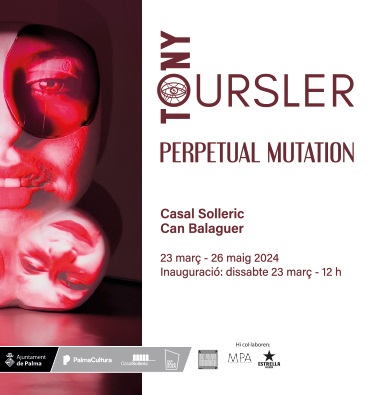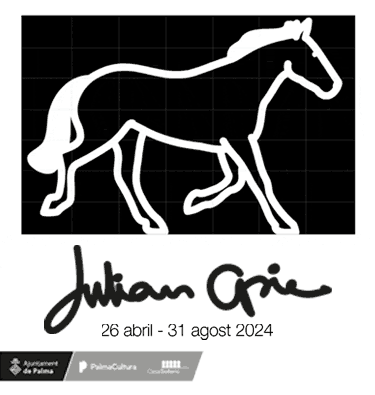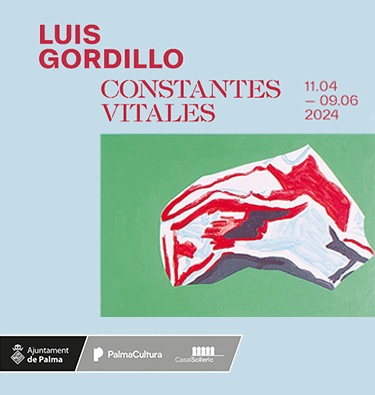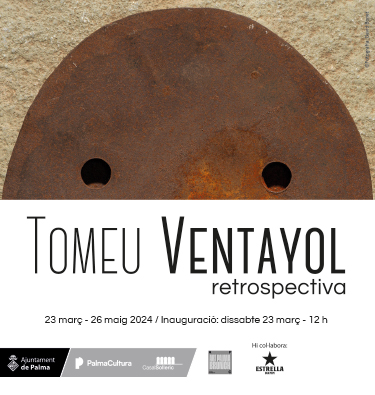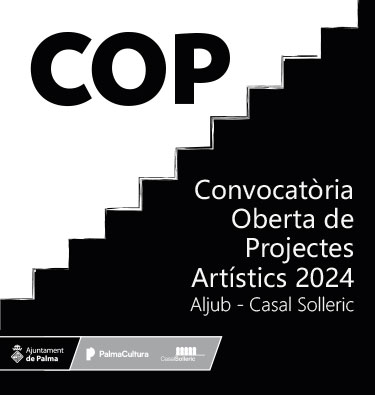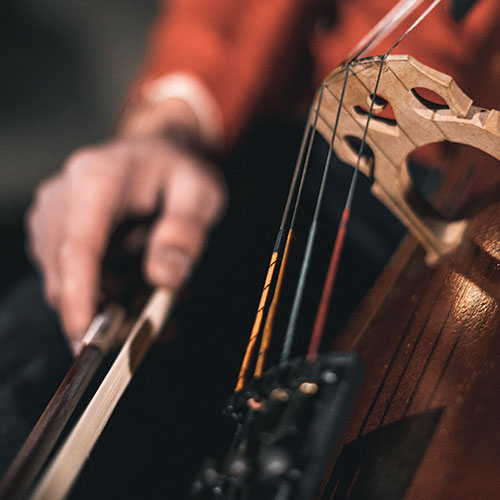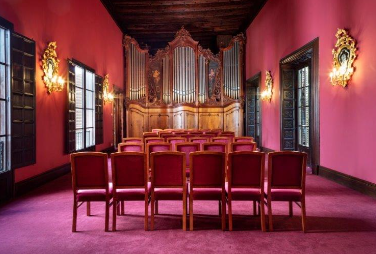CARMELA GARCÍA / Golden Age - Casal Solleric
CARMELA GARCÍA / Golden Age
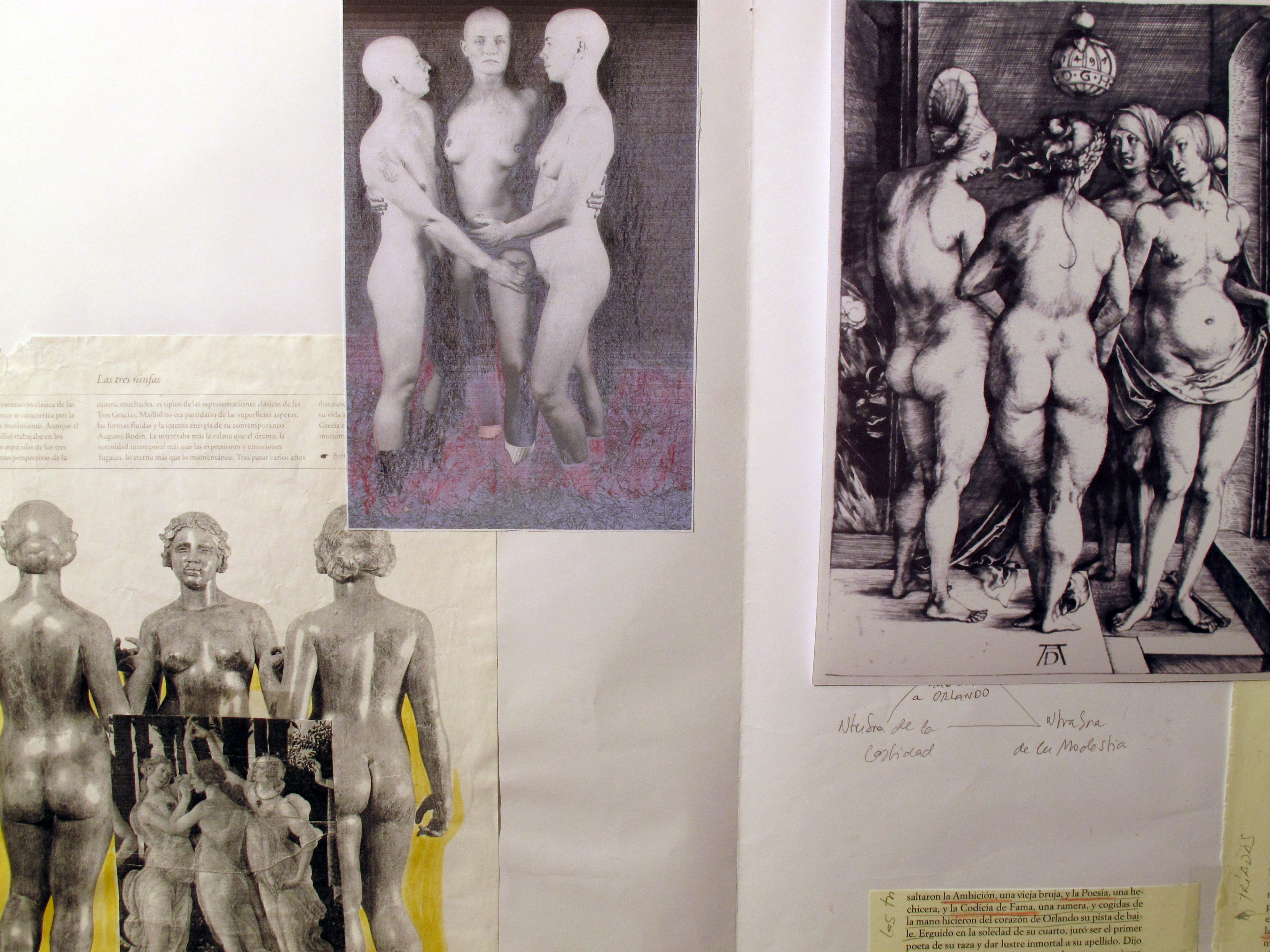
Venue: Box 27 at Casal Solleric
Dates: 11 June to 2 August 2015
Director: Pilar Ribal
Curator: Tolo Cañellas
Institutions: Palma Town Hall, Fundació Palma Espai d'Art and Fundación Banco Santander
The project sets out as an exercise in historical analysis, in the form of a constellation or map of ideas. Taking pre-patriarchal cultures as her starting point, Carmela García (Lanzarote, 1964) asks us to reflect on how such a supremely complex society could function in the absence of either authority or hierarchies, and for the benefit of all its members, with archaeology seeming to show that a civilization of these characteristics ¿ stable and enduring for millennia ¿ did in fact exist. The silent response towards, if not outright denial of, these interpretations by patriarchal societies seems in this context to express a self-interested position: preventing such ideas becoming the trigger of a critical line of thought that would unravel an entire repressive framework. Along these lines the artist traces out a model for an intuitive search for the images, texts, tokens and signs that also speak to us, through time, of the existence of legitimate phenomena of resistance, equally derived from history. From ancient settlements in the Middle East, such as the neolithic Çatal Hüyük, to contemporary feminism, Amazons, witches, Trojan women, Spanish bandit women, the Suffragettes, Femen¿all of them forms of resistance and activism, but also images that recur, creating a continuum through time. These former societies, today seen as utopian, have since antiquity been construed as a "golden age" in the history of humanity and provide the artist with a starting point for her personal reconstruction of a history that above all seeks to expose/display the story concealed by centuries of self-interested pre-eminence of what we understand as patriarchal values, as well as reveal the strategies of semantic complicity used to conceal the historical importance of the matriarchal. Seeking not so much to adhere to historical facts as to reveal the conditions upon which we can begin to interpret history in another way, or rather the images of history and the story implicit in this fictional reconstruction by way of a symbolic game, a bombardment of images and the telling and concatenation of subjective ideas.
The project takes on the characteristics of a work in progress, including some specific and essential considerations for this particular undertaking: the idea of a fragile mechanism, directly related to the selfsame fragility of the historical framework the piece reveals. Original photographs of the artist, photocopies, drawings, reproductions of works, pages of books, handwritten annotations, maps and spaces and any other related material, descriptive or meaningful, that serves the cross-sectional construction of the discourse, embracing all disciplines but at the same time rejecting them in their entirety, operating uniquely as a site-specific work. Using the colour of gold (in a direct allusion to the title) as an aesthetic/symbolic aid, traditionally associated with power in all its manifestations, with the ensuing implied criticisms in this context, in open contrast and dialogue with the poverty of the materials used.
The core proposition in the work of Carmela García (Lanzarote, 1964) is twofold: on the one hand the need to rethink the world and on the other the need to change it. To this end she uses the perspective of gender as the basis for claiming a different consideration of the feminine in the world (in the real world and in the world of representation) and also as a means of projecting the need for a distinct future. She embarked on her work in the middle of the 1990s, using chiefly photography but also other media such as video, installations, collage and collections of images. Her work has been exhibited in museums in Spain (Reina Sofía, CAAM, MUSAC¿), the United States (PS1 Moma), Japan (MOT, Kanazawa Museum), Paris, Amsterdam and Copenhagen, among others. Her work is held in both Spanish and foreign collections, public and private alike, such as MNCARS, ARTIUM, MUSAC, CAAC and DA2.
From June 11, 2015 to August 2, 2015
Date last modified: May 8, 2023


